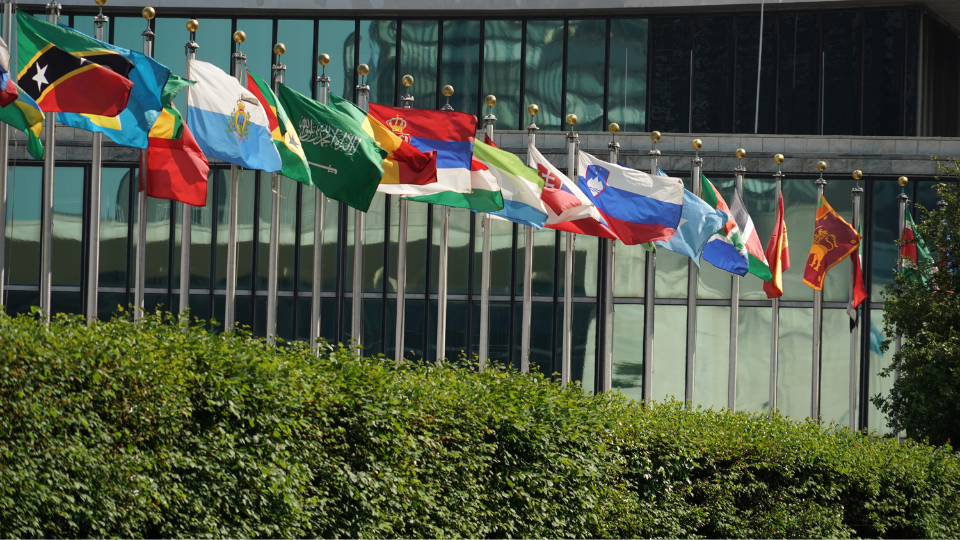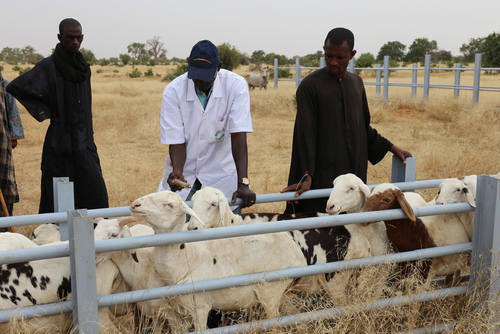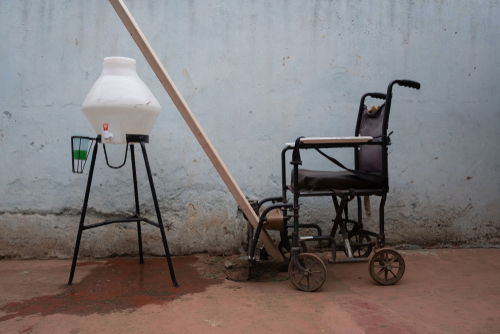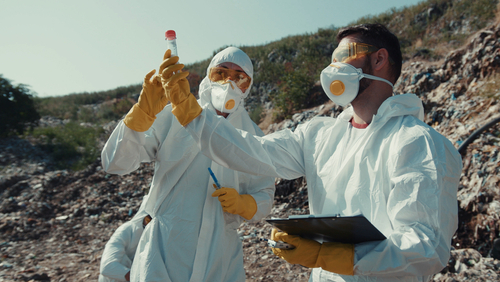September 18, 2023

A ‘Just Transitions’ approach is needed to promote equity in a world with AMR.
The ‘Just Transitions for AMR’ Working Group, which includes the One Health Trust’s Deepshikha Batheja, authored a commentary laying out the benefits of applying a ‘Just Transitions’ framework in preparation for a future with antimicrobial resistance (AMR). While AMR has been largely recognized as an immediate threat to human health, the objective of reducing AMR must not ignore inequities in burden caused by structural disparities, such as systemic racism, sexism, and poverty. These considerations warrant further involvement from both private and public sectors, as well as collaboration across sectors. In light of the second high-level meeting of the UN General Assembly in 2024, the group acknowledges that large efforts to mitigate AMR inherently necessitate trade-offs in other health and development areas. A ‘Just Transitions’ approach can facilitate the creation of parameters for these trade-offs and ensure that equity, justice, and sustainability are kept at the forefront of the global agenda against AMR. [The Lancet]
Access to medical oxygen – a vital component of pandemic preparedness – must be included in the UN General Assembly High-Level agenda.
The One Health Trust’s Dr. Ramanan Laxminarayan co-authored an article advocating for policymakers to make medical oxygen more accessible. The exclusion of access to medical oxygen from the agenda of the United Nations General Assembly High-Level Meeting to be held late September 2023 on Pandemic Preparedness and Response, Universal Healthcare, and Tuberculosis will be detrimental to global health promotion. The omission was surprising, as less than six months prior at the World Health Assembly member states unanimously adopted a resolution on increasing access to medical oxygen in a milestone decision. The resolution also stressed the need to include medical oxygen in global and national pandemic preparedness and response efforts and other health emergencies. [Think Global Health]
Reducing the incidence of drug-resistant infections will require more than vaccines in low-income countries.
Vaccines can potentially reduce antimicrobial resistance by decreasing both drug-susceptible and drug-resistant infections, which in turn reduces antibiotic usage. Influenza and pneumococcal conjugate vaccines have been demonstrated to reducing antibiotic use and typhoid conjugate vaccines (TCVs) have been effective against drug-resistant strains of typhoid. However, in a commentary authors highlight a study on the Typbar-TCV vaccine in Harare, Zimbabwe showing no significant reduction in antibiotic prescriptions for typhoid fever a year after the vaccine’s introduction, highlighting the complexity of AMR interventions and their outcomes. Factors which may have contributed include unchanged clinical guidelines for typhoid management, lack of a sustained routine immunization program, and the limited scope of the vaccine campaign. In low-income countries, challenges in diagnosing infections, social disparities, and socioeconomic conditions heavily influence antibiotic prescription. Therefore, a multi-pronged approach, considering diagnostics, socioeconomic factors, and improved working conditions, is essential for effective antibiotic use and managing antimicrobial resistance in such settings. [Lancet Global Health]
Decentralized antiretroviral therapy and home HIV testing are cost-effective and can avert HIV-related deaths.
The DO ART study, a household-based randomized trial conducted in South Africa and Uganda between 2016 and 2019, evaluated community versus clinic delivery of antiretroviral therapy (ART) to reduce HIV mortality and transmission. Researchers used data from the South African sites in the DO ART study to estimate HIV population prevalence, incidence, mortality, and disability-adjusted life-years (DALYs) from 2020 to 2060 in two scenarios: 1) standard clinic-based HIV care and 2) home testing campaigns with community ART every five years. Researchers found that 5 years after the start of the second campaign, 73,569 HIV-related deaths among men and 33,831 among women could be averted. Furthermore, a total of 13 million DALYs could be averted through the home testing and community ART scenario. Compared to the standard clinic-based scenario, home testing and community ART would avert US$102 per DALY with a positive net health benefit within the first 3 years of implementation despite increased investment requirements. [PLOS Global Public Health]
Approaching asthma treatment through a One Health lens
According to our current understanding of the disease, asthma is a maladaptive response of the airway epithelium to the environment, causing the innate immune system to produce an inflammatory response. While many existing asthma treatments target downstream inflammatory mediators, few aim to modify environmental exposure. A commentary highlights the benefits of alpine altitude climate treatment (AACT) for patients with severe and uncontrolled asthma. The exact mechanism of AACT, which has been shown to reduce asthma exacerbation rates and hospitalizations, is unknown, but is thought to reduce the aeroallergic burden and thus improve asthma control. This intrinsic link between human and environmental health merits using a One Health approach to devise new asthma treatment strategies and improve health outcomes in asthma patients. [Journal of Asthma and Allergy]
Local zoonosis research in Somalia should investigate disease burden among at-risk groups.
A systematic literature review was performed to assess the burden of zoonotic diseases in Somalia, where the pastoralist majority interact closely with their livestock. A total of 22 zoonoses were identified across 76 articles, from 1968 to 2021. Three-fourths of the papers focused on one or more zoonoses, and the rest combined zoonotic and non-zoonotic diseases. Rift Valley fever, a viral disease seen commonly in domesticated animals, was the most frequently mentioned zoonotic disease, followed closely by brucellosis and hepatitis E. While nearly all of the analyzed studies focused on the human or animal health domains, few reported data on both simultaneously. Furthermore, only 4 of the 43 studies that reported data on humans focused their research on pastoralists and none were conducted among high-risk groups, such as abattoir workers or internally displaced populations. Future local research on the burden of zoonoses in Somali/Somaliland must consider groups vulnerable to zoonoses, particularly in the context of uncontrolled movement of livestock and people across borders between Somalia, Ethiopia, and Kenya. [One Health]
Combination diagnostic-and-drug-resistant malaria has emerged in Ethiopia.
Plasmodium falciparum, a species of Plasmodium parasite that causes malaria infections, is of great concern in Africa where 90 percent of infections and deaths occur. Recently, P. falciparum has evolved resistance to common diagnostic tests and the most commonly used treatment drugs. A diagnostic resistance surveillance study conducted in Ethiopia found that eight percent of malaria cases were caused by diagnostic-and-drug-resistant P. falciparum. Close monitoring and research to understand how these mutations emerge and spread is critical to the success of efforts to eliminate malaria in Africa. [Nature Microbiology]
Despite progress, many LMICs won’t reach Sustainable Development Goals for reproductive, maternal, newborn, and child health by 2030.
A cross-sectional secondary analysis of World Health Organization data from 70 low-and-middle-income countries examined reproductive, maternal, newborn, and child health (RMNCH) interventions in family planning, antenatal care, immunizations, and management of childhood illnesses from 2000 to the present and projected to 2030. The results showed improvements in all regions of Asia, Africa, Latin America, and the Caribbean, yet only 18 countries are predicted to reach the goal of 80 percent coverage by 2030. Notably, RMNCH coverage is expected to decline in southern European middle-income countries over the same period. Highlighted disparities included higher RMNCH coverage in urban areas compared to rural areas, among populations in which women have higher educational attainment, and in populations with higher relative income. [The Lancet Global Health]
Veterinary technicians could play a role in promoting antimicrobial stewardship and fighting antimicrobial resistance
Veterinary antimicrobial stewardship (AMS) consists of actions taken by veterinary stakeholders to preserve the effectiveness of antimicrobial drugs while protecting animal, environmental, and public health. A qualitative study of a small but diverse group of veterinary technicians in the eastern United States revealed that most veterinary technicians (vet techs) were knowledgeable about antimicrobial drugs, could identify instances of antimicrobial misuse, and understood the driving forces behind antimicrobial resistance and the principles of AMS. Most vet techs identified areas of practice in which they could contribute to AMS, such as client education and dialogue with veterinarians regarding antimicrobial use. However, they also identified barriers to participation such as the hierarchical structure of veterinary medicine and time constraints. [BMC Veterinary Research]
Image from Canva











